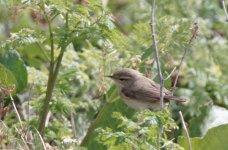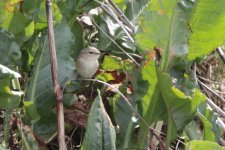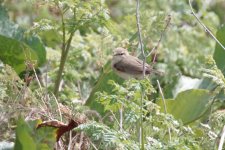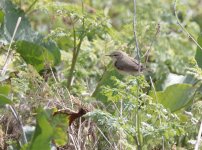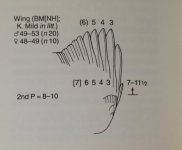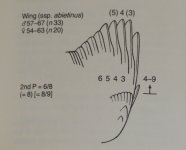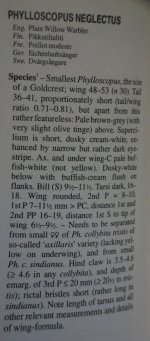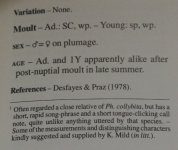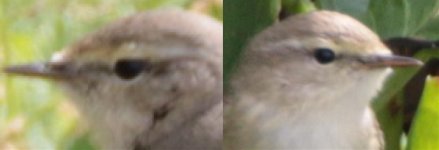I have zero idea about this bird, and no competence to even begin to join in (just watching out of interest and lockdown boredom). But here are the photos with the saturation of yellow (only yellow, not the photo as a whole) reduced (but obviously to a random degree, since I / we have no idea of what the original looked like; as it happens, it looks to me like the original was just bright sunshine, and the colours were basically OK).
Many thanks. It was quite an extreme treatment, but that is handy to see that although (to my eye and on my single computer screen) the yellowish on the flanks and wing bend are now mostly gone (perhaps some resulting from reflections from the surrounding vegetation?), there's still yellow remaining on the anterior part of the supercilium. The bill, of course, is still not fully black, being paler along the cutting edges.
As others, I have no first hand experience with this species, whatsoever, and therefore my approach is mostly exploratory.
I got a response from one more colleague, who was more non-committal than the other two:
I agree that this does superficially look like a Plain Leaf Warbler at first glance, but my feeling is that the bill is slightly too long and narrow. Whilst accepting that both the primaries & tail look interestingly short, I'd be reluctant to pronounce what would presumably be a first for Bulgaria (?) on the basis of 3 images taken from the same angle. Can we be sure that there isn't any foreshortening going on here (although the images do seem to be almost side-on)? Also, the images aren't really clear enough to accurately assess the number of visible primary tips and which primaries are emarginated (although I'm not sure where I would find that data for PLW). Without other images or notes on call/habits, I wouldn't go much beyond "possible PLW".
I think there's no foreshortening at all.
I'm attaching two figures from Svensson's Identification Guide to European Passerines (1992 edition), the first showing the wing of PLW, and the second that of abietinus Chiffchaff. In short, the emarginations are from P3 to P6 on both species. PLW has a conspicuously shorter wing, with a longer P1, with the tip of P2 falling between P8 and P10 (thus almost leveled with the secondaries tips), whilst on Chiffchaff P1 is shorter and P2 falls between P6 and P8 (as would be expected from a longer wing anyway). Wing tip is rounder in PLW, with tip composed of PP3-5, and more pointed in CC, with P4 being usually the longest.
Is there any chance to have a 100% crop of the original images? So that the maximum resolution is available and the wing could be more accurately analysed (although I'm a bit skeptic that this will be possible conclusively). Are there any more pictures?
I don't think the tail is regrowing. Tail feathers don't look particularly fresh, and although it is rather difficult to evaluate from these photos, they seem to be slightly (at least) sun bleached (they would be fully fresh, if regrowing).
Was the bird looked for again? Perhaps it's still worth to search for it? Maybe.
Finally, perhaps the photos could be sent to Lars Svensson, is everything else fails.









